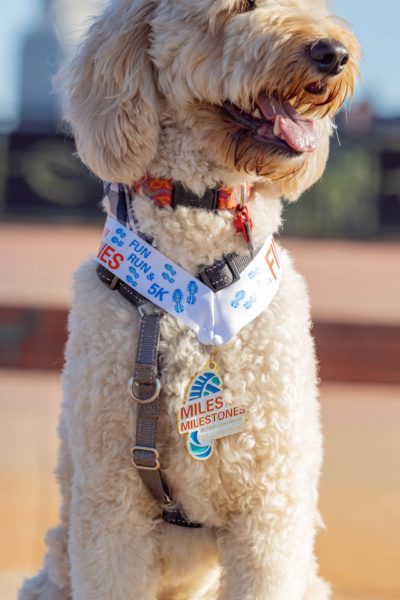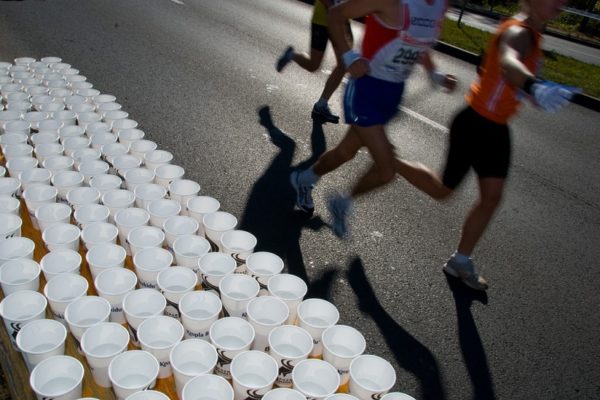Raceflation: Are Fun Runs More “Expensive” Today?
With inputs from: Jinoe Gavan, founder of Takbo.ph
Inflation is an economic reality that affects every part of our lives. And, yes, that includes the registration fee for your fun run. Now you might be asking, how did this happen?
Before, we tackle the five reasons why I think that fun runs are more expensive nowadays. Just a short disclaimer.
This article isn’t meant to criticize fun run organizers about how they price their events. Instead, it aims to give readers a perspective on how things work when organizing a fun run, its challenges, and ultimately the factors that determine the price of registration fees.
After all, the Philippines isn’t the only country experiencing a rapid increase in fun run registration fees. Countries such as Singapore, Malaysia, and the U.S. also have seen a significant increase in fun run registrations.

5 Reasons Why Fun Run Registration Fees Have Increased
Rising registration fees for fun runs aren’t new. Before the pandemic hit, many annual fun run registration fees usually increased between PHP 50 and PHP 100 for the same event distances.
Even some of the events organized by Takbo.ph and our partner Leadpack, such as the RunFest and the 20-Miler, followed such trends.
Below are some of the reasons why we are seeing the cost of registration fees rise up:

1. Increased Demand for Outdoor Activities
Welcome to the so-called “running era,” where the demand for fun runs and other outdoor activities has risen after the pandemic. Fun runs are back and some races in Metro Manila, Cebu, Clark, Baguio and sometimes Davao could easily get 5,000 or more runners.
And when something is in demand, you can always expect the prices to go up provided that it fulfills the other half of the equation — low supply or scarcity. Now you might think, how can there be scarcity in events when there are fun runs almost every weekend?
The answer lies in our next factor: fewer venues to host these running events.

2. Shorter Race Routes
Gone are the days when cities could allocate a long stretch of their main roads for fun runs. Many fun runs also have a shorter time to use said race routes because they have to be opened to vehicular traffic.
Take Metro Manila, for example. Several years ago, many fun runs were allowed to use the SM MOA to BGC race route via Buendia Avenue. There are no longer SM MOA to BGC race courses and even the Roxas Boulevard route has been made shorter for some races. The same could be said about the Filinvest Alabang venue.
Many fun runs today have to settle for a shorter race route resulting in distances like 21K, 32K, and 42K to have multiple loops. Thus, you have more runners who are constantly on the race route at any given time which results in congestion.
To address the issue of congestion, fun run organizers usually put a limit on the number of people who can register. However, fewer participants also means that fewer people will shoulder the price spent on organizing the event and thus— an increase in the price of registration.

3. Supply Chain Disruptions
Fun runs are not immune to global supply chain disruptions. Many of the products involved in fun runs are imported abroad such as the medals and shirts. And while they could be made locally, the materials used in making them could also come abroad such as the fabrics.
Medal designs are also one of the factors that some runners take into account before joining to a race. Race organizers have to order them abroad as there are only very few local medal manufacturers that can churn out intricate and complicated medal designs.
Not to mention the rising cost of almost everything in today’s economy. Many aspects of hosting a fun run from logistical costs to manpower have also increased. In some areas, even the permit from the local government to use roads and certain places has also risen.

4. Less Commitment from Sponsors
For many brands and companies, hosting a fun run is part of their marketing campaign. Running events are a great opportunity to promote products, services, and even real estate. There are also fun runs for charity which are more of a fundraiser for their beneficiary.
Brands and even personalities tend to sponsor fun runs. However, most sponsors offer their products or services such as hydration, timing equipment, venue, and other non-financial support.
However, there are instances that the sponsor can’t commit to 100% of a certain expense such as supplies for the aid station. So, the organizer has to also allocate a portion of the collected registration fee for it.
Today, there are already cheaper and more effective ways to market to people. And that’s social media and online ads.

Fewer support from sponsors and partners means that the organizer has to pass down the added cost to the consumer. As a result, the organizers have to sometimes buy their supplies and other race necessities.
If you also notice, there are weekends when several large fun runs are happening simultaneously in metropolitan areas such as Manila, Cebu, Davao, Baguio, and other major areas. Some sponsors may have to choose which event/s they have to support or limit the items they supply to still fulfill their commitment and meet their marketing objectives.

5. Organizers Must Earn Their Money Back
Organizing a fun run involves a lot of work and preparation. Getting a share of the fun run’s profit is fair for the organizer who went through all the trouble of making the fun run possible.
Moreover, hosting a fun run is a huge gamble for the organizer. There are instances that when they don’t meet a certain number of participants, they end up negative on their balance sheet.
As mentioned earlier, organizers could get support from sponsors, but it often doesn’t involve money unless they get them as their clients. In this case, they have more flexibility with the pricing since the client often gives them a budget to work on and are paid for their services.
Some fun run organizers have also been incorporated or made into formal companies which means they now have regular employees. And to continue hiring their staff, they must make a profit. Additionally, they have to pay monthly taxes and annual business fees whether the event’s target number of participants were met or not.
I can’t discuss with you here whether the pricing of an event to another is fair or not. I think that’s a great discussion in another article.

Are Fun Runs Still Worth It?
Now that you know what’s behind the rising registration fees, you might be thinking- are fun runs still worth my money? That’s entirely up to you.
If you still want to join fun runs every now and then, there are many smaller events, particularly in the provinces, that have cheaper registration fees. They are also less crowded and are often supported by the municipal / city government or the local community.
You also have the option to choose to run only on the fun runs that offer the best value for your money. Some events also offer bundle deals and discounts, which can significantly lower the cost if you register as a group. Most fun runs also have “Early Bird” rates which you should use to your advantage.
So, always weigh in about your options and ask around if joining a particular fun run is worth it or not. Always do your research and be a smart consumer when it comes to which events you should join.